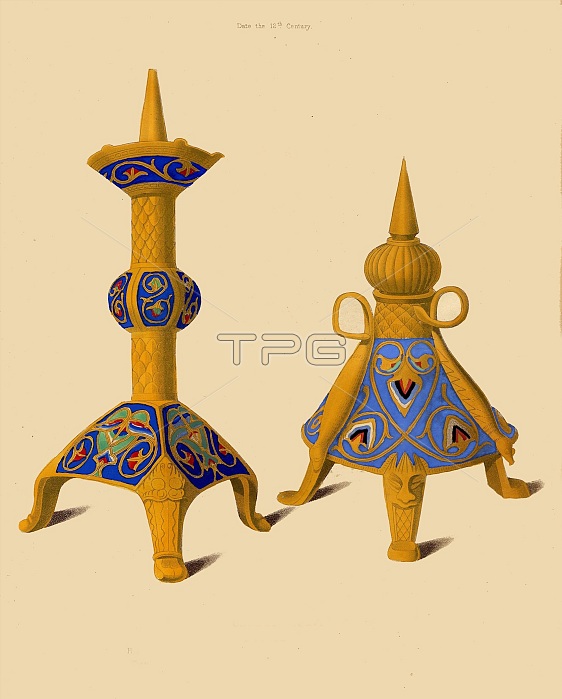
12th century candlesticks - It is believed that the earlier candlesticks were made of wood, probably little more than a stick tapering at the upper end to a point, and this would explain the origin of the older form of candlesticks, in which, instead of being placed in a socket, the candle was fixed on a long spike (as in the examples given in our plate), more naturally than the supposition that it originated from the adaptation of the older Roman candelabra, by fixing a spike on the place which had been originally intended to support a lamp.The oldest examples known of candlesticks with sockets are of the time of Edward III, but the spiked candlesticks continued to be used, particularly in churches, long after this period. They are still used in Catholic countries. In the 33rd volume of the Archaeologia, Sir Samuel Meyrick has described a pair of curious candlesticks, of enamelled copper, of the 12th century, preserved in the collection at Goodrich Court. They are ornamented with figures. The two candlesticks represented in our plate, of which the shorter one is in the collection of Colonel Bourgeoir du Catelet, and the other in the Louvre at Paris, are of the same date, and bear a considerable resemblance to them. They are also of copper, enamelled. The taller candlestick was the one in general use; the shorter one is the small candlestick used for the alter.
| px | px | dpi | = | cm | x | cm | = | MB |
Details
Creative#:
TOP19109792
Source:
達志影像
Authorization Type:
RM
Release Information:
須由TPG 完整授權
Model Release:
No
Property Release:
No
Right to Privacy:
No
Same folder images:

 Loading
Loading